Water Still A-Risin’
J.D. Potié, Chris Lowrey and Caleb Nickerson
PONTIAC April 23-29, 2019
The Pontiac was hit with record levels of water as local waterways surged with rain and snowmelt this past week. Equity staff were on the scene throughout the week to witness the preparations and survey the immense damage, region by region.
Municipality of Pontiac
No municipality in the region has dealt with as many extreme weather events as the Municipality of Pontiac over the last three years, and with river levels surpassing those of the 2017 floods, residents and municipal staff were working long hours to keep the water at bay.
After dealing with the record floods of the spring of 2017, another bout of floods in the fall of 2017 and early 2018, a tornado last fall, residents now face their toughest challenge yet with river levels expected to surpass those seen in 2017.
The parking lot of the Luskville community centre has been a hive of activity for the past week when Canadian Forces members and community volunteers filled sandbags.
Many residents on the municipality’s social media pages had high praise for the emergency services personnel and municipal staff for their efforts. There were also examples of neighbours coming to the aid of one another with stories of sandbags being dropped off at residences in need.
But the demand for volunteer help was so dire that the municipality was appealing for any person over the age of 14 to come and help fill bags.
Evacuations for more than two dozen roads in the municipality were ongoing throughout Friday and the weekend.
Quyon was especially hard hit as large sections of the town sit under several feet of water. The Canadian Forces, along with filling sandbags, were also tasked with protecting the pumping station to ensure the town has access to potable water. But the municipality also asked residents to limit their water intake as the water system’s pumps have been working non-stop.
The Quyon community centre sat precariously close to taking on water and the only way to access it was via a makeshift road of gravel.
The east side of Ferry Road in Quyon was overshadowed by a large dike that has been constructed to protect the residences adjacent to the Quyon Jamfest grounds.
On April 29, the Municipality evacuated nine streets in the town due to concerns about the stability of the dike.
In addition, both St. Mary’s and Onslow schools, the Quyon Ferry and the CLSC all closed on Monday due to the surging water.
All evacuees are also asked to report to the Luskville Community Centre to register with both the Red Cross and the Centre intégré de santé et de services sociaux de l'Outaouais (CISSSO).
Fort Coulonge/Mansfield et Pontefract
On April 23, around 45 soldiers from the Canadian Armed Forces (CAF) Royal 22nd Regiment were deployed at Town Hall in Mansfield et Pontefract to help residents in the municipality with flood prevention.
A day after contacting the Quebec Ministry of Public Safety asking for help regarding floods in the municipality, Mayor Gilles Dionne said troops responded quickly, as around a dozen light-armoured vehicles with CAF engineers and soldiers rolled down Hwy. 148 with a mission to help those in need.
With such a large presence from the CAF in the municipality, Dionne said he was pleased to see the army respond so quickly to the council’s call for action.
“It’s unreal,” he said. “We never thought we would get it this fast. The last time we got the army, they had about 12 guys altogether. This morning, we have 45.”
At around 10 a.m., light-armoured vehicles and loading trucks stood side by side in the municipal sandpit located on Chemin de la Truite in Mansfield et Pontefract, while around 40 students from l’Ecole secondaire Sieur de Coulonge (ESSC) among other residents and uniformed soldiers teamed up with shovels, bags and funnels to fill nearly 10,000 sandbags for the community.
At the same time, CAF engineers were dispatched throughout the municipality to evaluate infrastructure, according to Dionne.
“We’re going to have some recognition to do on lots of stuff like sewer systems and municipal infrastructure,” he said. “They have engineers for that too. I know one engineer is going to look at the bridge to see what can be done, if needed.
Having already been a significant asset to the community during this year’s flood season, the CAF’s presence in the community’s period of struggle would bring a wave of positivity to local residents, according to Pontiac MP Will Amos. “It just gives so much confidence to the people, the mayors and the volunteers,” he said. “We’ve got a lot of hard work from volunteers and by the end of the day we’re going to have 10,000 sandbags. That gives people real confidence and certainty that we’re on top of this.”
Nearly a week after the Municipality of Pontiac declared on Tuesday that a state of emergency, Dionne said his municipality was preparing for similar conditions, noting that they could potentially become worse than those of the 2017 floods.
Like in 2017, the most at-risk areas around the municipality were the town of Davidson as well as various locations along the Coulonge river, Dionne said.
“We have our usual places that we put our sandbags,” he said.
Pontiac MP Will Amos was on the scene Tuesday morning, and noted the importance of cooperation between the many organizations on the ground.
“I just think that what happened is we hadn’t been through a flood like 2017 in a long time,” said Amos. “Because we’ve been through 2017, we’ve learned a few lessons. We’ve recognized that, sure a solid group of volunteers can prepare several thousand sandbags in a day. But if you have capacity and the CAF are present you can fill many more thousands and evaluate infrastructure.”
Over 100 residents flocked to the Knights of Columbus Hall in Fort Coulonge for an information session on Saturday afternoon.
Fort Coulonge Mayor Gaston Allard and Dionne updated residents and laid out the areas that were being evacuated.
There was high praise for emergency services personnel and municipal staff for their handling of the emergency. Both mayors said that the experiences of 2017 left them uniquely well-prepared to deal with yet another 100-year flood.
“Very happy,” said Allard when asked of the municipal response. “2017 was a great learning experience for both municipalities.”
It was a sentiment echoed by Dionne, although the threat of even higher water levels presents more challenges.
“We thought we were pros until about three days ago,” Dionne said of new challenges that could come with the weather forecast.
With the water levels expected to peak on early in the week, a steady parade of dump trucks filled with sand rumbled their way down rue Baume to dump sand piles on the manhole covers.
Municipal workers were also using some of that sand to build a dike along the west side of rue Baume between Aubrey and Albert Streets as the water levels crept closer to the road.
Allard said the municipality may have to shut off the sewage system in order to prevent backflows into the homes of residents.
In Mansfield et Pontefract, Dionne said that at least 15 streets had been evacuated and the municipality was keeping a close eye on several others.
The two municipalities are in a precarious spot as they sit right at the intersection of the Coulonge and Ottawa Rivers.
“The Coulonge drains into the Ottawa, and when its too high, (the Coulonge) backs up,” Dionne said. “People on the river have never seen it this backed up.”
Both mayors said that it is a daunting task to have to deal with a second 100-year flood in three years, they know residents are up to the task.
On Monday, Le Patro released a message on social media noting that they would be closed for the foreseeable future, as their pavilion was filled with two feet of water and their reception centre had at least six inches. The message also said that Fr. Marc Frappier, who lives at the site, was doing his best to salvage or secure what he could of their equipment before he was evacuated himself.
“This battle may be lost for now, but it certainly isn’t over and we are far from giving up!” the message read.
All schools in the area were closed for the start of this week.
Bristol/Clarendon
On Thursday, children from Dr. S.E. McDowell School in Shawville made short work of filling 500 sandbags for residents in nearby Sand Bay who were affected by the flooding.
Councillor Jonathan Dagg said that he met teacher Julie Tubman the day before, who suggested the students help out. Dagg and Mayor John Armstrong were present to supervise the filling and give the youngsters some pointers.
Armstrong returned to the school on Friday to thank all the children for their help and deliver some pictures of the bagging.
Down in the Bay, residents were hard at work securing their properties from the rising river. Sand Bay Association President Glenda Baker was working on rue McCagg and said she was thankful for the help from council and neighbours who came to their aid. Several roads and cottages in the area were completely submerged on Thursday, and more followed over the weekend.
Armstrong said that other than Sand Bay, the only other major concern was chemin Laughren, which washed out completely last week. Larger culverts were ready to be installed once the water levels return to normal.
He said a few other roads were waterlogged, but were fixed in short order and municipal crews were out regularly inspecting culverts.
“It’s a hard time for everyone,” he said.
The parking lot at the corner of River and Wharf Roads in Norway Bay was busy with activity on Saturday as several Canadian Forces members and residents shoveled sand into bags as the massive military vehicles rumbled in the background.
“I’ve seen a lot of things in that parking lot, but never this,” said Norway Bay resident Doug Dawson.
Dawson came up early to the cottage this year when he caught wind of the flooding in the area. The retiree volunteered his time in MacLaren’s Landing on the other side of the river on Friday before heading up to the cottage to pitch in on Saturday.
While some cottagers are able to come up early, it was obvious that several others haven’t been able to make the trip up just yet.
Many of the cottages on River Road had sandbags piled around their properties but in other spots, water still crept up to the roadway.
All that was visible of the Norway Bay Pier, which sits several feet above the water for much of the summer, were the upper parts of trees.
Some residents at the western end of River Road needed a canoe to access their properties.
While not everyone was able to help out with the heavy physical labour of filling sandbag after sandbag, many residents from Bristol and other communities brought food and drinks to keep the volunteers full of energy.
Bryson/Calumet Island
On Friday, crews in Bryson were working to secure a dike running along rue de Havelock. Town foreman Gerald Stewart said that approximately five homes were affected by the flooding at that point and that several homeowners were working alongside municipal workers to mitigate damage to their homes.
Just up the road on Grand Calumet Island, there were several homes evacuated and many roads closed. On Friday, the municipality declared a state of emergency. By early Friday afternoon, the end of chemin des Outaouais was inundated and volunteers were working feverishly to secure the remaining homes that were in danger of flooding. Several roads were closed to all but local traffic.
Upper Pontiac
The Upper Pontiac received a walloping this week from rising floodwaters, resulting in several dozen evacuations and many severely damaged properties. On Wednesday, the region declared a state of emergency and Canadian Forces troops were in the region to help locals fill sandbags.
On the weekend, Waltham was a hive of activity as volunteers worked to secure homes along Chemin du Traversier and to shore up a dike along chemin Dempsey. Speaking to The Equity on Sunday afternoon, Mayor David Rochon said that the river had risen quickly and they had to move fast in order to protect as many homes as they could, though roughly two dozen homes had been evacuated. He was amazed by the outpouring of support from the community.
“It’s been unbelievable,” he said. “I knew Waltham had a heart, but not this big.”
He also expressed his frustration at how the lack of cell phone coverage in the area had hampered the response to the flooding. Rochon himself was bouncing between different areas in his truck trying to coordinate loads of sand and food.
“We need [cell coverage],” he said. “It’s time Bell did something. Peoples’ safety is at stake.”
Up the line in Chichester and Allumettes Island, the situation in low-lying areas wasn’t much better. Many homes were submerged along the south side of Chemin de Chapeau Waltham.
Reached on Monday afternoon, Allumettes Island Mayor Winston Sunstrum said that at least 24 people had been evacuated already and 12 roads were closed. He said that currently they were keeping a close eye on road infrastructure throughout the municipality, but also the sewage system in Chapeau.
“The water’s rising so high we’re worried it might back up our sewage system,” he said. “So we’re advising residents to flush as little as possible, wash as little as possible, the less amount of water going down the sewer system the better.”
Dr. Wilbert Keon School was closed for the start of the week.
Sunstrum commended all the hard work the community had done to secure the numerous waterfront properties that the municipality boasts.
Way up the river in Rapides des Joachims, Mayor Jim Gibson said that only one home, located on rue Principale near the docks required sandbagging. He added that his own nearby home and that of a neighbour were also pretty soggy.
“I’ve got roughly three inches in the basement that I’m pumping out now and the sump pump next door is going constantly as well,” he said. “This is the low spot on the island, we’re the only ones that will probably be affected, the rest of them are all another eight, ten feet above us.”
In addition, two poles supporting power lines heading into the ZEC were sitting in water but hydro crews quickly fixed the situation.
“They took the lines down and moved them to the other side of the ZEC bridge and they’re now high on the land and everything’s fixed up,” Gibson said.
Campbell’s Bay/Litchfield
Earlier in the week, volunteers and municipal crews were busy sandbagging in the parking lot of the Campbell’s Bay R.A. Centre, for residents living on the low-lying River Road. Reached by phone on Monday evening, Mayor Maurice Beauregard said that the sandbagging is over for now, but that around 24 people had to be evacuated from their homes and roughly 15 residences were affected by the rising water.
“We’re past the stage of sandbags, there’ll be no more sandbagging as of right now, but we’ve had great volunteers from the people in town,” he said.
He added that engineers were keeping a close eye on culverts in the area, but so far everything was holding well.
St. John’s School was closed for the beginning of the week, to take pressure off of the local sewer system. Beauregard said that the municipality put out a notice to residents to limit their water consumption.
“We’re maintaining well, but we don’t want to put any more stress on the system,” he said.
In Litchfield, the municipality put out a notice on Friday, requesting residents evacuate from Barette Road, Burke Road and parts of Crawford Road.
There was also a partial closure of Pilon Road, from #201 to #276.
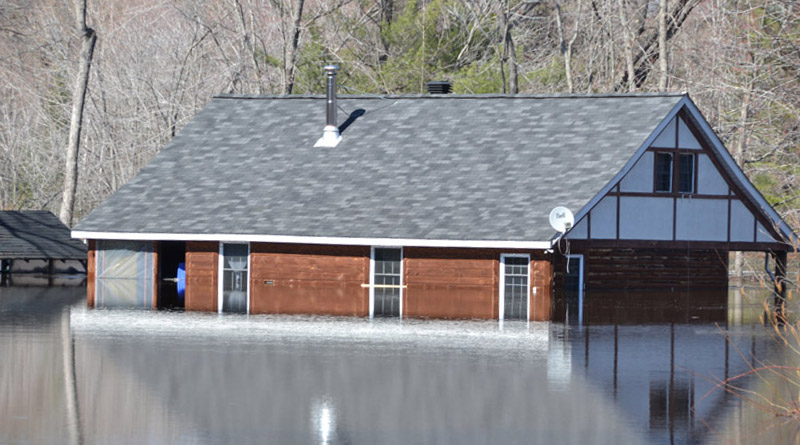
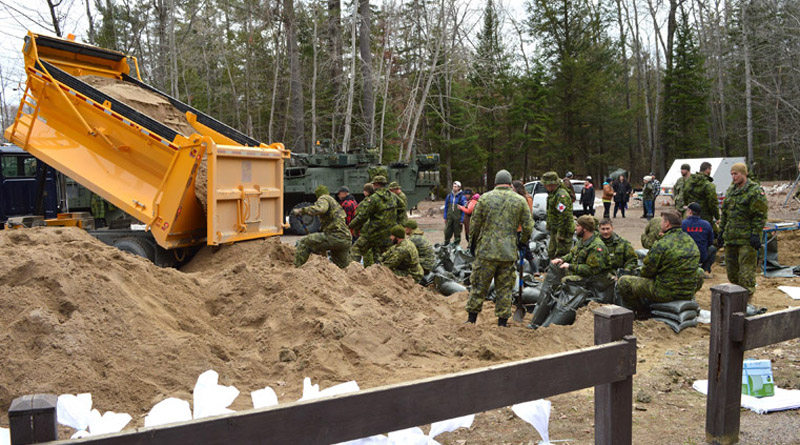
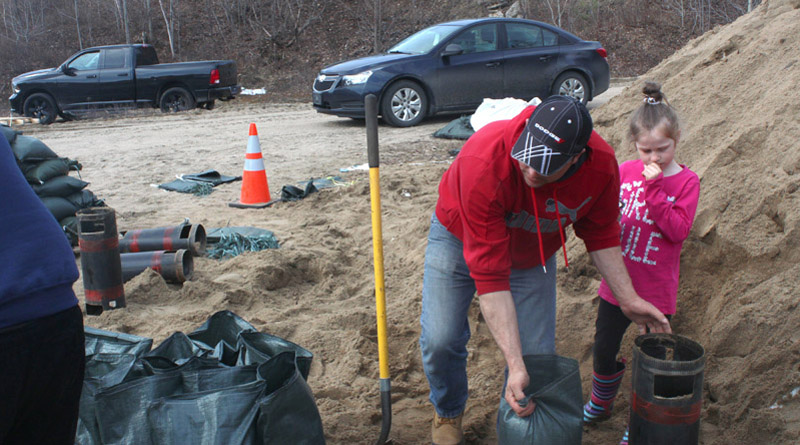
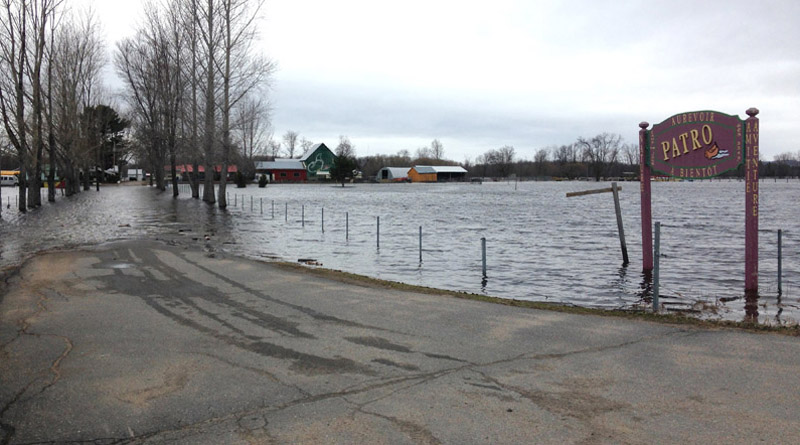
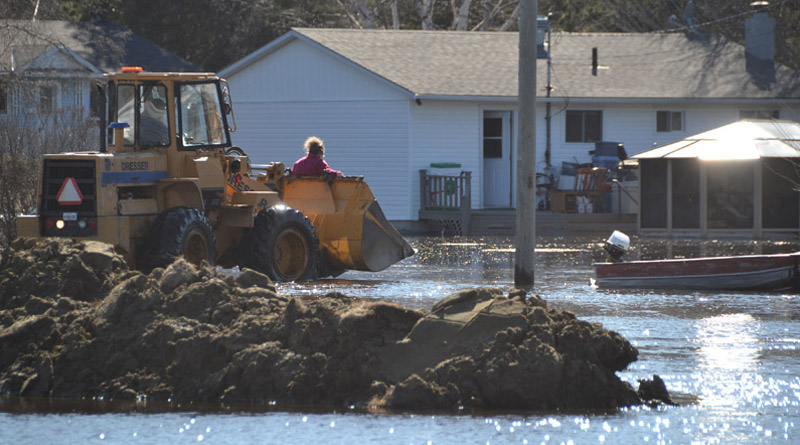
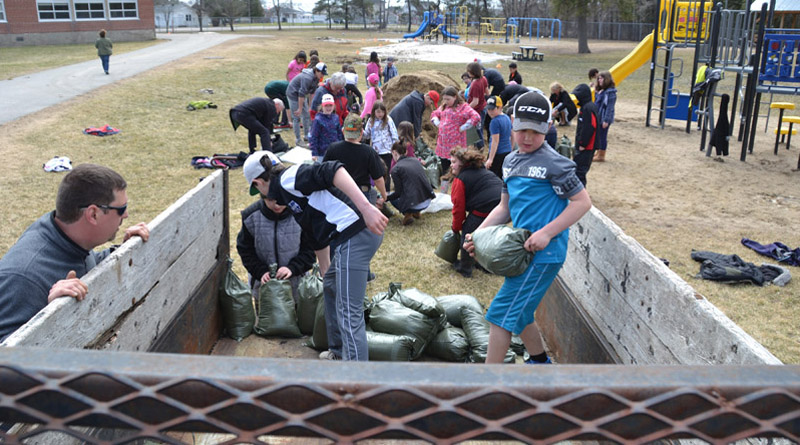
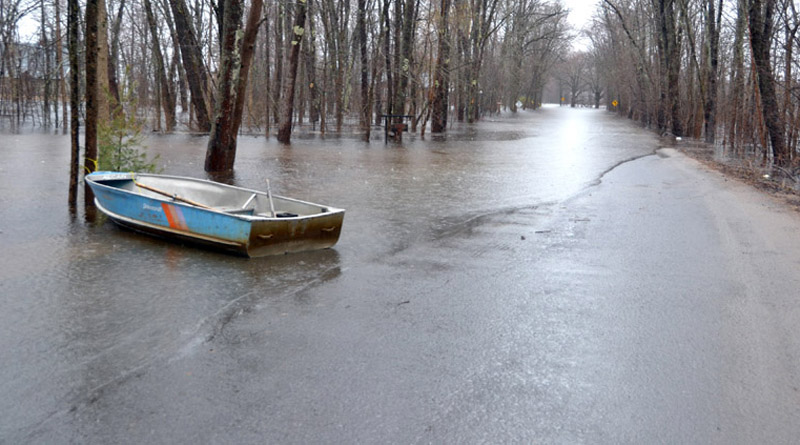
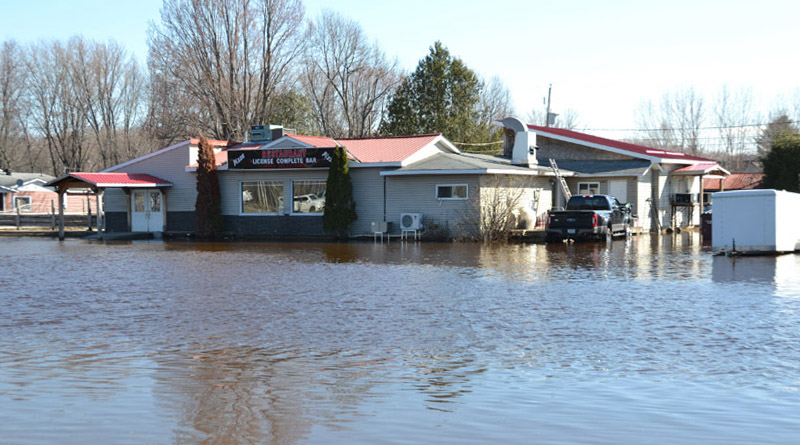
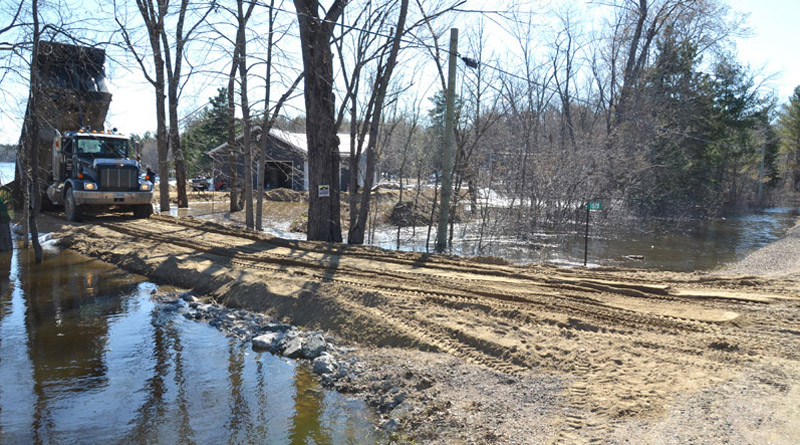
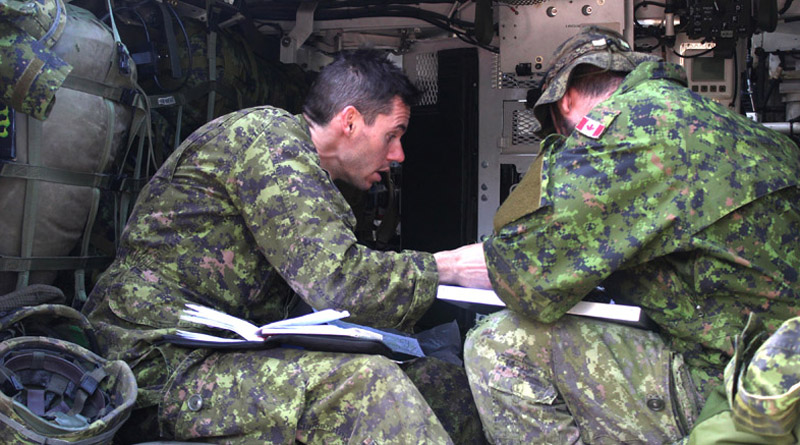
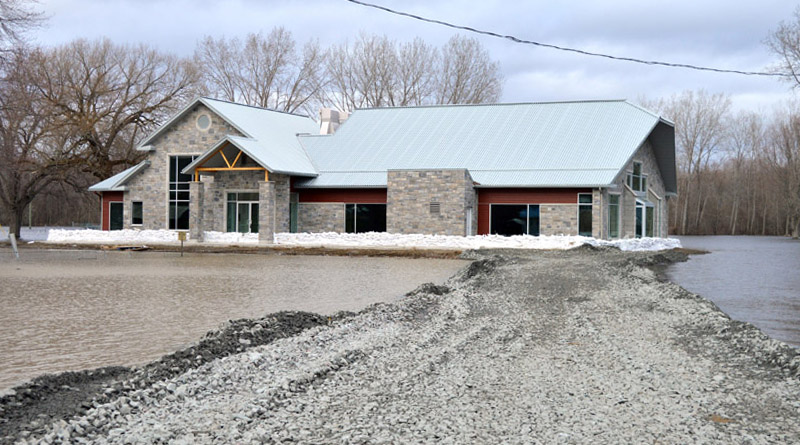
FREE ACCESS FOR EQUITY SUBSCRIBERS
This article is available free to all subscribers to The Equity. If you are a subscriber, please enter your email address and password below.
SET UP YOUR ONLINE ACCOUNT
If you are a subscriber but have not yet set up your online account, please contact Liz Draper at liz@theequity.ca to do so.
HOW TO BECOME A SUBSCRIBER
To become a subscriber to The Equity, please use our Subscribe page or contact liz@theequity.ca


